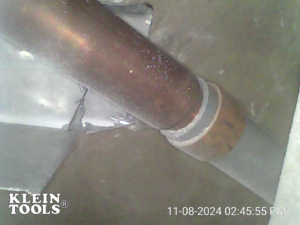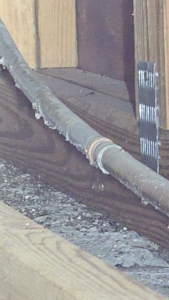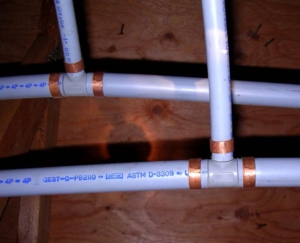Polybutylene Pipes: Plumbing’s Greatest Oops Moment
Ah, Polybutylene water lines—the divas of the plumbing world. Installed in millions of homes from the 1970s to the 1990s, these pipes seemed like the plumbing dream: affordable, easy to install, and capable of carrying water like a champ. But as with any too-good-to-be-true story, the dream turned into a soggy nightmare. Let’s dive into the world of plumbing’s biggest “oops” and why these pipes are more trouble than they’re worth.
Once Upon a Pipe Dream…
Picture this: It’s the 1980s. Big hair is all the rage, everyone’s jazzercising, and builders are giddy about Polybutylene pipes. “Revolutionary!” they said. “The future of plumbing!” they declared. And for a while, these lightweight, flexible pipes delivered on their promises.
Homeowners happily turned on their faucets, blissfully unaware that their shiny new plumbing system was essentially a ticking time bomb. Fast forward a couple of decades, and Polybutylene is failing spectacularly, leaving a trail of water damage, tears, and drywall destruction.
Polybutylene’s Drama Queen Moments
So, what exactly went wrong? How did these pipes go from plumbing royalty to the black sheep of the industry?
- Chlorine’s Revenge
Polybutylene’s mortal enemy turned out to be something in every homeowner’s water supply: chlorine. Over time, this common chemical weakens the pipes, causing them to crack and fail. Imagine your plumbing aging like overcooked spaghetti—brittle, fragile, and definitely not what you want in your walls. - Sneaky Leaks
When Polybutylene pipes fail, they often do so quietly. Instead of a dramatic burst, they’ll spring tiny leaks behind walls or under floors, wreaking havoc long before anyone notices. By the time you spot the damage, you’re looking at repairs that could rival a kitchen remodel. - Insurance Woes
Home insurers have a love-hate relationship with Polybutylene. Well, mostly hate. Many companies outright refuse to cover homes with these pipes, and if they do, expect your premiums to skyrocket. Nothing says “welcome home” like a big insurance headache, right?
How to Spot the Culprit
Think you might have these plumbing pests lurking in your home? Here’s how to identify them:
- Color: Usually grey, but sometimes blue or black.
- Location: Found near water heaters, under sinks, or in crawl spaces.
- Markings: Look for “PB2110” stamped on the pipe—a sure sign you’ve got Polybutylene.



Breaking Up with Polybutylene
Let’s be real: It’s time to part ways with these problematic pipes. Sure, replacing them might feel like a big project, but it’s a necessary step to protect your home. Think of it as upgrading from a clunky flip phone to the latest smartphone. Modern materials like PEX or copper are durable, reliable, and way less likely to flood your basement.
Why Wait? Fix the Problem Today
Ignoring Polybutylene piping is like ignoring a weird clunking sound in your car—it won’t end well. A proactive replacement can save you from future disasters, not to mention skyrocketing insurance premiums and endless headaches.
At Billings Home Inspections, we’re here to help. Whether you’re buying, selling, or simply wondering if your pipes are plotting against you, we’ll provide a thorough inspection and the guidance you need to move forward with confidence.
📞 Call us at 561-644-0279 or visit www.billingshomeinspections.com to schedule your inspection today.
Moral of the Story:
Polybutylene pipes may have been the cool kids of the plumbing world in the 80s, but like acid-wash jeans and mullets, it’s time to leave them in the past. Trust us—your walls, wallet, and water supply will thank you! 😄



Leave a Reply
Want to join the discussion?Feel free to contribute!